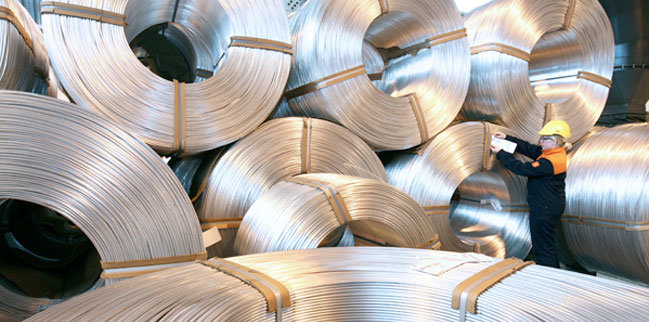[pullquote]New study reveals EU Aluminium tariffs are damaging downstream industries, by Francesca Bruni[/pullquote]
New Study Sheds Light on the Efficacy EU Aluminum Import Duties: EU import duty on primary aluminium funnels billions to non-European companies and big industry while hurting domestic downstream SMEs.
The European duty on imports of primary aluminum costs billions of euros for small and medium-sized Italian companies working in the industry’s downstream sector. Almost half of this cost is benefiting non-European companies.
The first-ever study on the downstream segment of the aluminum industry, has been published by the GRIF (Industrial and Financial Research Center) “Fabio Gobbo” at the LUISS Guido Carli University in Rome – on behalf of the Brussels-based Federation of Aluminium Consumers in Europe (FACE) – emphasizes the magnitude of the damage and competitive disadvantages for EU SMEs caused by the current import tariff.
The European Union’s retention of import duty on primary aluminum is unjustified from an economic point of view, since it has resulted in additional costs of up to 15.5 billion euros over the last fourteen years. All this at the expense of small and medium-sized downstream European enterprises, seriously damaging their competitive position in the global picture, especially in light of the increasing competitive pressure from producers outside of Europe.
In parallel, maintaining the duty has enabled upstream producers to enjoy unjustified benefits. The reason for this extra cost is derived from the fact that the value of the duty, equal to 6%, is artificially included in the price of all aluminum sold in the EU, regardless of country of origin.
The downstream segment of the aluminum industry accounts for over 90% of the total workforce employed in the sector. As indicated by the four possible scenarios addressed in the study, the cumulative costs of tariffs on imports in the period 2000–2013 range between 5.5 and 15.5 billion euro. However, only a limited portion of these costs constituted a gain for EU customs offices.
The remainder represents extra profit for primary aluminum producers, European and non-European alike, which are typically large, vertically-integrated companies.
While only 885 million euros (16% of the extra costs) are collected by EU Customs, 2.2 billion (40%) are extra profits for European primary aluminum producers while 2.5 billion (44%) represent extra profits for manufacturers outside Europe who export duty free to the EU. In fact, tariffs on primary aluminum lead to a cost increase in semi-finished and finished aluminum products. This, combined with an increase in competitive pressure exerted by producers outside Europe, puts the survival of enterprises in the downstream industry at risk, thus weakening the entire European aluminum industry.
The study recommends the abolition of import duty on primary aluminum for several different reasons.
The EU has long been a net importer of aluminum, and the domestic production capacity of primary aluminum can ensure coverage of only 45% of apparent domestic consumption. EU trade policies are damaging the competitiveness of an essential part of the aluminum industry, especially considering that downstream companies (extruders, laminators, manufacturers of foundry castings, etc.) employ over 90% of the European aluminium industry’s workforce. Finally, the effect of the duty is in conflict with the spirit of the Treaty of Lisbon, as the EU trade policies are limiting small and medium-sized businesses’ freedom to enact economic initiatives, encouraging the large, vertically-integrated manufacturers.
This overshadows the fundamental role played by downstream firms, linked to strategic aluminum sectors in Europe, such as: auto, construction, mechanics, aerospace, etc.
If the introduction of a duty is aimed at protecting the domestic industry, or import substitution strategies, according to the LUISS study, the existence of European duty on primary aluminum imports is not responding to these needs.
The extra costs unjustifiably imposed by EU trade policies will be even more important in the future. In fact, the study calculates the cumulative cost of the duty – including the period of 2008–2013, when the fall in demand triggered by the crisis significantly reduced prices (excluding premiums) of the material. It follows that the combined effect of an increase in aluminum prices when the crisis is over (some estimates point to an expected increase in demand for aluminum equivalent to 6% per year) and an increase in premiums on aluminum – also stemming from the inability of European primary aluminum production to meet domestic demand – will significantly expand the impact of the duty on the downstream aluminum businesses.
© Art Valley. All rights reserved.
